Specifications and Features
The Canon EOS 80D is the latest in a long line of DSLRs using an APS-C-size sensor designed to appeal to enthusiasts. It is the replacement for the EOS 70D, and like that model, it places a strong emphasis on video as well as stills. Also like its predecessor, the EOS 80D adopts a new viewfinder-based AF system for stills, and another separate on-sensor AF system for live view and video.
Canon has increased the number of viewfinder AF points from 19 on the 70D to 45, and has made them all vertical and horizontal line-sensitive (i.e., cross-type), which on paper is an impressive upgrade. Although the 70D debuted Canon’s impressive Dual Pixel on-sensor phase-detection AF system, the EOS 80D expands on that by adding continuous focus capability during both video and still capture (in live view mode). Other improvements over the 70D include video capture at up to 60 fps, and adding the 7560 RGB+IR exposure metering system from the EOS Rebel T6s and T6i (760D and 750D). The EOS 80D adopts the same fold-out 3.0” 1.04m-dot vari-angle touchscreen LCD monitor as that on the 70D. The new model measures 5.5 x 4.1 x 3.1” / 139 x 105.2 x 78.5mm and weighs 1.61 lb / 730g, body only (with battery and card). The Canon EOS 80D is available now at a body-only price of $1,199 (USD).
- 24.2-Mpix APS-C CMOS sensor
- Digic 6 image processor
- 3.0” 1.04m-dot vari-angle touchscreen LCD monitor
- Full HD 1080p video at up to 60 fps
- 45-point AF system (vertical and horizontal line sensitive)
- Dual Pixel CMOS AF
- ISO up to 25600 with expansion
- 7 fps continuous shooting
- 756k-Pixel RGB+IR metering sensor
- Built-in WiFi with NFC
Measurements: Notable bump in sensor dynamics at base ISO
Canon’s newly-developed sensor in the 80D achieved an overall DxOMark score of 79 points — a new high watermark for the company’s APS-C sensor designs. It’s also a noticeable improvement in performance over recent models with similar pixel counts, such as the EOS 760/750D models at 70/71 points, and the semi-professional EOS 7D Mk II and EOS 70D at 68 and 70 points, respectively. Improvements in sensor design have led to gains in the SNR, along with attendant increases in color depth, dynamic range, and low-light ISO.
Canon-EOS-80D vs. Canon-EOS-7D-Mark-II vs. Canon-EOS-70D: Improvements limited to base ISO
Comparing the performance of the 80D with that of its predecessor, the 20.2-Mpix 70D, and with the current flagship of Canon’s APS-C DSLRs, the 7D Mk II, the new sensor has over 1 bit of extra color depth.
However, while that is a significant gain, it’s not quite as straightforward as it appears. The measured base ISO is just ISO 64 and a lot lower than the measured base ISOs of the 7D Mk II and 70D. At similar ISOs up to ISO 200, the 80D shows a small but worthwhile improvement; however, from ISO 400 onwards, noise levels are practically identical, resulting similar color depth at high ISOs.
Lower noise at base has the expected increase in dynamic range over the 70D and 7D Mk II, and at 13.2 EV, it’s a respectable result. This advantage is eroded quickly, though, and even falls behind the 7D Mk II from ISO 800 onwards. In our low-light ISO measurements, the 80D shows a similar result to the 7D Mk II, which is excellent and a slight improvement over its predecessor, but by far the majority of this sensor’s gains over its siblings are at base ISO.
Canon EOS 80D vs. Sony a 6300 vs. Nikon D7200: Canon closing in on class-leading sensors
While the 80D sensor has a welcome bump in performance over its siblings, it’s not quite as convincing compared with the class-leading sensors found in the Sony a6300 and the Nikon D7200. Both rivals can boast improved color sensitivity at not just base ISO, but throughout the ISO range. Higher color sensitivity means lower noise levels, and both the a6300 and D7200 have improved color depth and an increase in usable dynamic range at every ISO setting. However, both rivals go about this very differently. From the graphs, the D7200 has a clear advantage in DR over the 80D and the a6300 from base to ISO 400, though we can see a slight bump in color sensitivity for the a6300 at the ISO 800 setting and again at ISO 6400, with the attendant increase in DR at those points. The lower noise levels from the rival sensors also account for the improved low-light ISO figures, with the 80D being around a third of a stop behind the D7200 and about half a stop behind the a6300. Despite the slight loss of ground there, the 80D remains an excellent performer at high ISOs.
Conclusion
The Canon EOS 80D has improved low ISO noise and a more useful dynamic range at and close to base ISO over its siblings. However, class-leading sensors such as those found in the Sony a6300 and the Nikon D7200 still have more usable dynamic ranges, and that’s not just at base, but at high ISOs as well.
While the results from the 80D on DR should appeal to landscape photographers who routinely adopt the base ISO setting, it’s worthwhile to remember that Canon probably had other priorities in mind when developing this sensor. While there may have been some trade-offs in DR at high ISOs, noise levels aren’t far behind the class leaders, and the Dual Pixel AF mode in live view and video looks promising for video and certain still applications. Lowering the noise floor at base while increasing pixel count remains an impressive feat, and ultimately the Canon EOS 80D sensor offers a pretty decent performance overall.


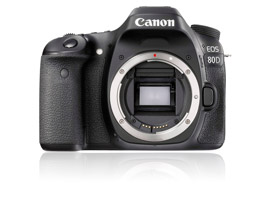



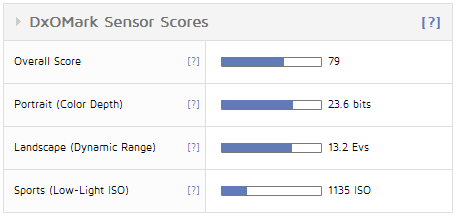
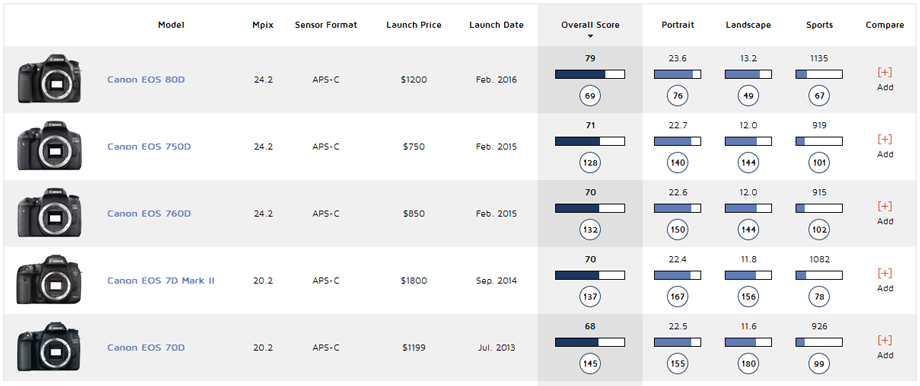
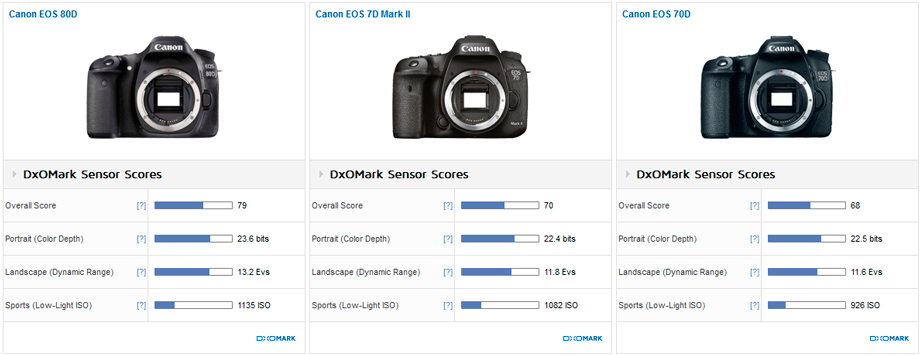
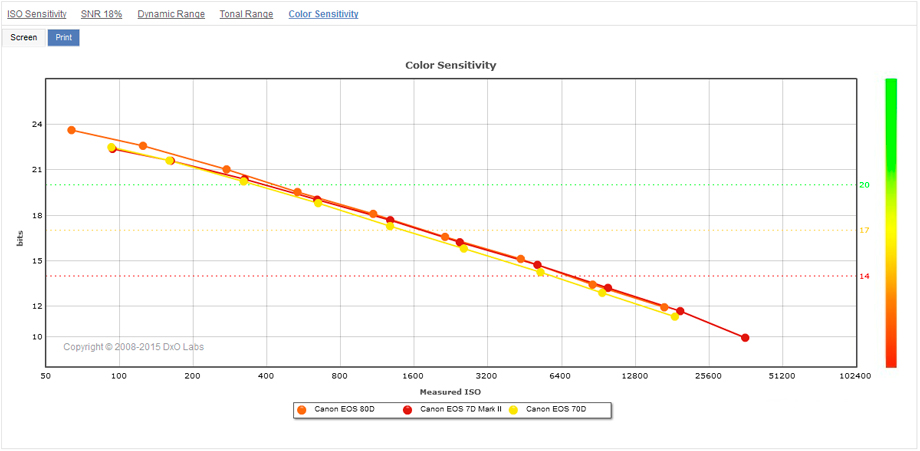
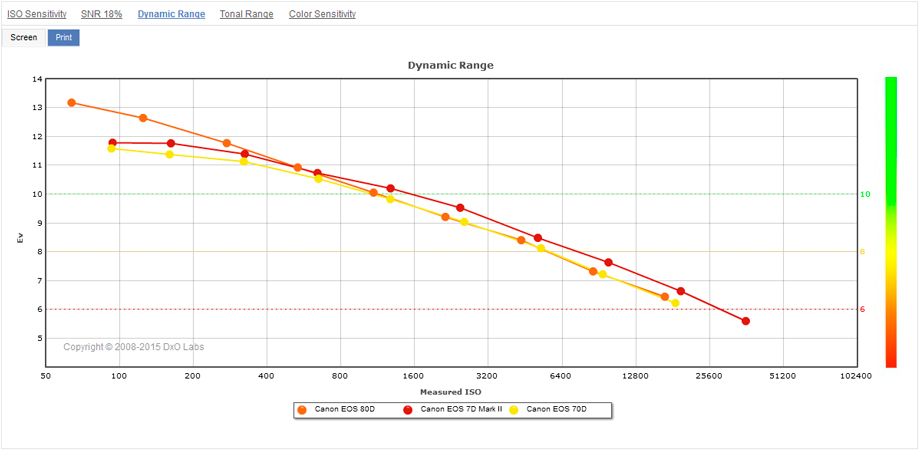
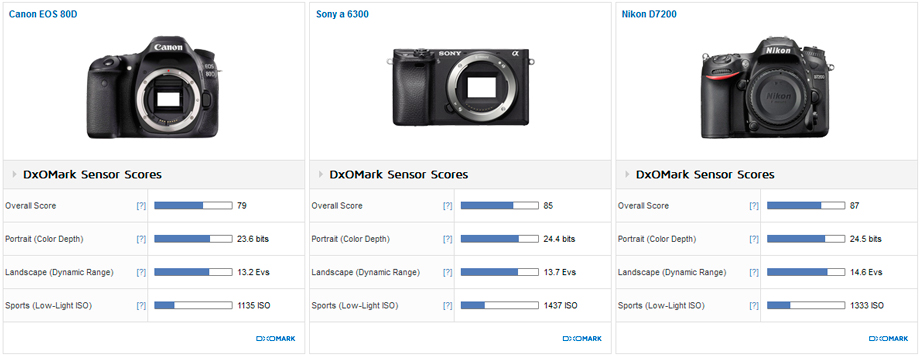
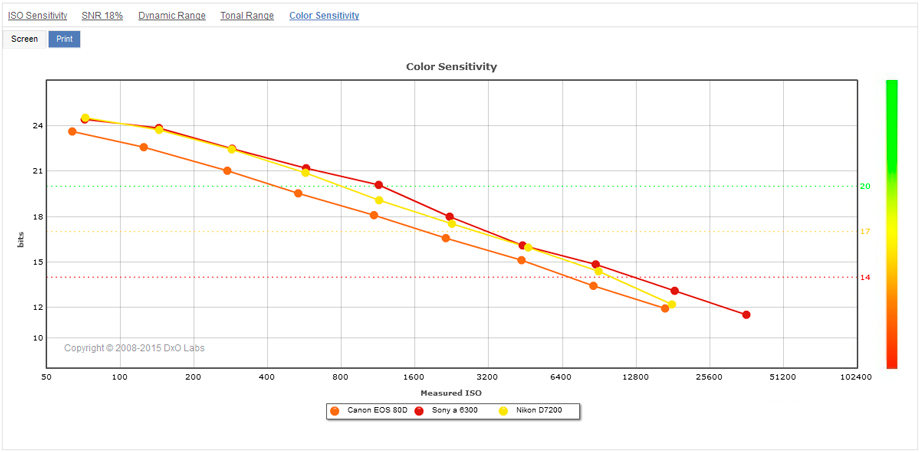
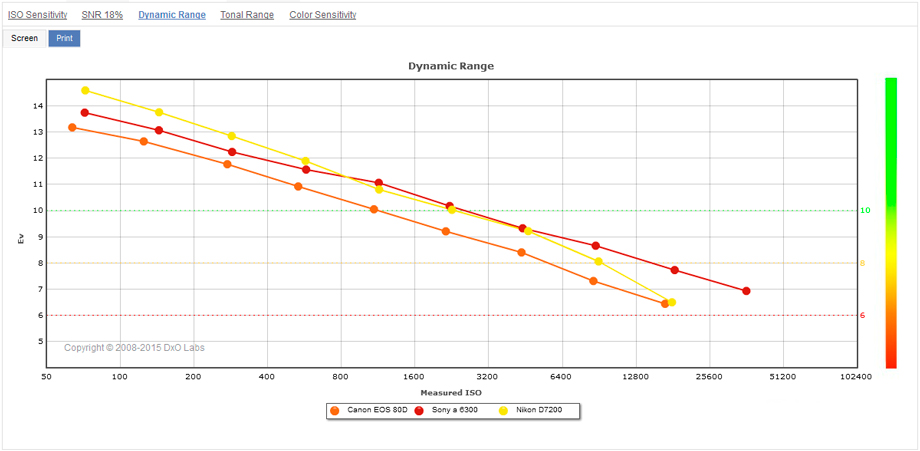
DXOMARK encourages its readers to share comments on the articles. To read or post comments, Disqus cookies are required. Change your Cookies Preferences and read more about our Comment Policy.